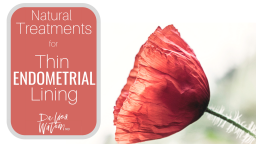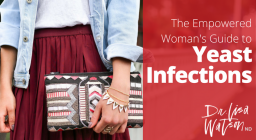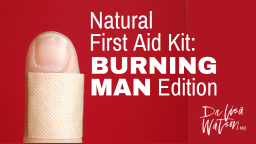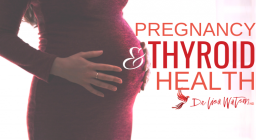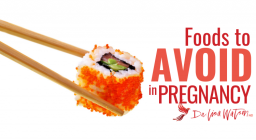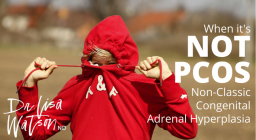

Ok ladies. In the last article we talked about why your periods can be painful – conditions l
ike endometriosis, fibroids or pelvic inflammatory disease, and lifestyle factors. We also talked my top ten lifestyle tips for pain-free periods. (If you haven’t read that article, pop over and read it now, then come on back and join me here. I’ll wait.)
In this article we’re going to go deeper into the science on period pain and discuss ten of most promising natural treatments for managing period cramps and painful periods.
But remember, these won’t work if you don’t have a healthy foundation in place, so start with the lifestyle changes, and then work with your Naturopathic Doctor to layer in some of these treatments to help you achieve your pain-free period!
Nutrients for Menstrual Cramps
B1 – Thiamine
Ah, thiamine, vitamin B1 – named so because it was the first B vitamin discovered! I’ve got a weak spot for B vitamins (and all vitamins really) because they are literally how our bodies get sh*t done! Thiamine is needed for your body to make energy from food – especially the grains that it is abundant in.
The mechanism by which this B vitamin can help period cramping stems from it’s action on the central nervous system and neuromuscular system – all coming down to it being effective for reducing spasmodic uterine pain (i.e. cramping). One study (link: https://www.ncbi.nlm.nih.gov/pubmed/8935744) found that taking vitamin B1 daily for 3 months completely alleviated period pain in 87% of study participants – damn! Worth a shot I think!
B6 – Pyridoxine
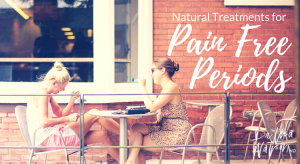 Vitamin B6 has fast become one of my favourite B vitamins (sorry B12!) due to it’s profound actions on female hormone balance. In addition to supporting energy production (just like all the B vitamins), vitamin B6 is needed to make progesterone, serotonin, norepinephrine and melatonin.
Vitamin B6 has fast become one of my favourite B vitamins (sorry B12!) due to it’s profound actions on female hormone balance. In addition to supporting energy production (just like all the B vitamins), vitamin B6 is needed to make progesterone, serotonin, norepinephrine and melatonin.
When used with its BFF, magnesium, vitamin B6 may be helpful in decreasing period cramps. When used for 10 days prior to the period, women have reported less painful periods (and less premenstrual acne!) when using a combination of B6 and magnesium. While it may not be enough on its own, it can be an important part of a treatment plan for period cramps.
Magnesium
Magnesium, known primarily for its ability to relax muscle (making it incredibly useful for blood pressure, muscle cramps and asthma), is unfortunately one of the most common nutrient deficiencies in North America. Found mostly in unprocessed foods (like leafy greens, nuts and seeds), magnesium deficiency can cause:
- fatigue
- irritability
- weakness
- muscle spasms
- menstrual cramps
- poor nail growth (I get asked about this issue all the time!)
- insomnia
- sugar cravings
- anxiety
It has been suggested that the majority of women with PMS have a deficiency of magnesium – unfortunately magnesium is not easily tested for in laboratory tests, so deficiency often goes undiagnosed.
But the benefits of magnesium are not going unnoticed! A Cochrane study found that using magnesium for period cramps was effective for pain relief and resulted in women using less pain medication during their periods. Win! Magnesium: 1, period pain: 0.
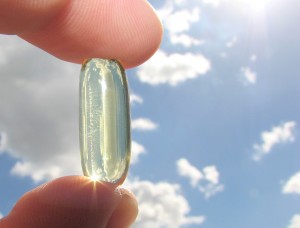 Omega 3s
Omega 3s
The last of our nutrients for period cramps, are our omega 3 fatty acids. These amazing compounds decrease inflammation (by altering prostaglandin production – remember this from the last article?) and taking relatively high doses (around 2 grams per day) has been found to reduce pain scores in women with period pain. And with all the side effects of omega 3s (healthy skin, less inflammation, improved mood, better heart health), it sure won’t hurt to give these a try.
Botanicals for Menstrual Cramps
While nutrients help our body to function optimally (that’s what they do!), botanicals, or plant medicines, act more like medications – changing or encouraging our bodies to function in specific ways. Most often I have my patients on a combination of nutrients (Woot! Optimal health!) and plant medicines to get the best outcomes.
Valerian
Best known for it’s sleep supporting actions, valerian (Valerian officinalis) can be very supportive for managing painful periods. With the ability to bind to GABA receptors in our brain (the same ones Valium uses), valerian can reduce pain, anxiety and insomnia. It has also been found to reduce spasmodic contractions – those same ones that lead to all the pain of period cramps. Valerian doesn’t need to be taken all month – just during your period to manage the discomfort and misery of painful periods.
Crampbark
Well doesn’t the name just say it all?? Crampbark (Viburnum opulus) has been used for generations for period cramps. Acting as a uterine relaxer and antispasmodic, crampbark is your best friend if your period cramps are accompanied by low back pain or pain that radiates into your thighs. Taken in a similar manner as ibuprofen, one capsule of crampbark every 3-4 hours can help to reduce cramping and pain.
Ginger
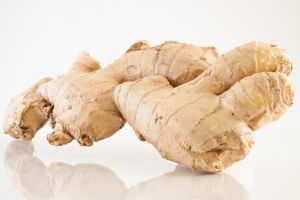 I hate to play favourites (no, that’s not true. I totally love my favourites), but ginger is the BOMB when it comes to managing period pain.
I hate to play favourites (no, that’s not true. I totally love my favourites), but ginger is the BOMB when it comes to managing period pain.
With antispasmodic effects as well as the ability to inhibit the production of inflammatory and spasmodic prostaglandins (again with the prostaglandins!), ginger is a powerhouse of period pain management.
There have been studies comparing ginger with ibuprofen and found no difference in the effectiveness of the two treatments for period pain – in fact, more women in the ginger group were completely pain free than in the ibuprofen group. BOOM!
Ginger is most effective starting a few days before your period, and continuing through the first days when cramping is most likely to occur.
Black Cohosh
One of the best researched botanical medicines in the world, black cohosh’s claim to fame is in managing symptoms of menopause. But that’s not all it is good for.
Black cohosh (Actaea racemosa) is another uterine relaxer that can be useful for period cramping. It’s best for women who also have significant water retention (think swollen ankles, bloating and tender breasts), irritability during PMS, and delayed or irregular menstrual periods.
Other Natural Supplements
A few other natural medicines can help you achieve your dream of a pain-free period. And I certainly couldn’t leave them out! These two treatments are best used under supervision or advisement of your Naturopathic Doctor – so have a talk with them about whether to include these in your plan for a Pain-Free Period!
Melatonin
 Melatonin is most commonly thought of as our sleep hormone, produced by the pineal gland in our brain to support sleep-wake cycles. But it does so much more than that!
Melatonin is most commonly thought of as our sleep hormone, produced by the pineal gland in our brain to support sleep-wake cycles. But it does so much more than that!
Melatonin levels are lower during the second half of our menstrual cycle (during our luteal phase), and this is thought to be a factor in the development of period pain.
When melatonin levels are high, it can decrease the contractile force of the uterus – decreasing painful cramps. As well melatonin is known to have analgesic properties – decreasing pain. Melatonin also inhibits the production of those pesky prostaglandins that lead to most period pain.
Safe for most women, melatonin should be used for a few days prior to the onset of the period and for the first few days of the period. Taken before bed, you’ll likely get some stellar sleep as well!
BHRT Progesterone
For women whose period pain does not improve, no matter how many things they try, bioidentical progesterone can be a game changer.
Progesterone is the hormone that dominates the second half of the menstrual cycle, and a drop in the level of progesterone leads to an increase in inflammatory arachidonic acid and prostaglandins from the uterus. Welcome to Pain City.
If we can lessen the severity of this drop, or delay it, then often we can reduce the pain and intensity of uterus contractions that come from a hard drop in progesterone.
Best indicated for women in their 30s and 40s, bioidentical progesterone should be prescribed by a knowledgeable practitioner. Used for somewhere between 3-12 days before the onset of the period, progesterone may be exactly what some women need.

Onwards in your Pain-Free Period Journey!
Ladies, you don’t have to suffer. There are SO many things you can do to manage your periods so that they do not negatively impact your life. If you want to learn more, browse through some of the other articles on this website, or book an appointment to get your periods back on track!


